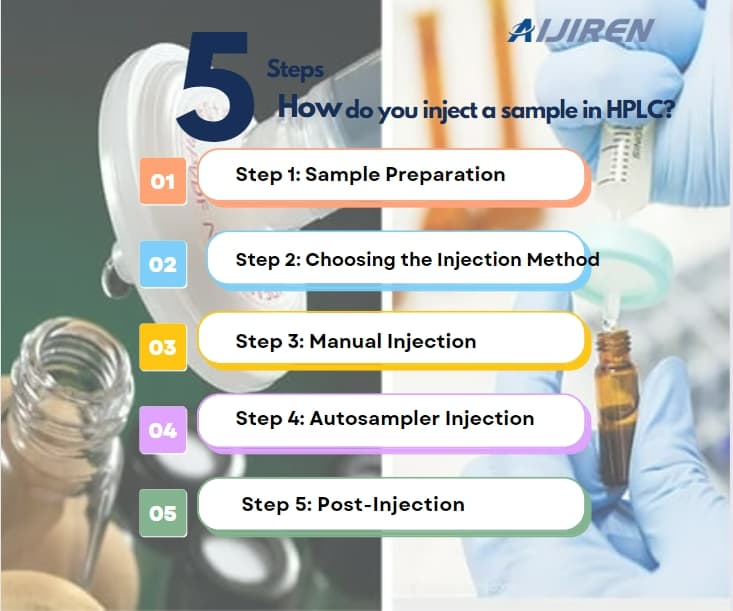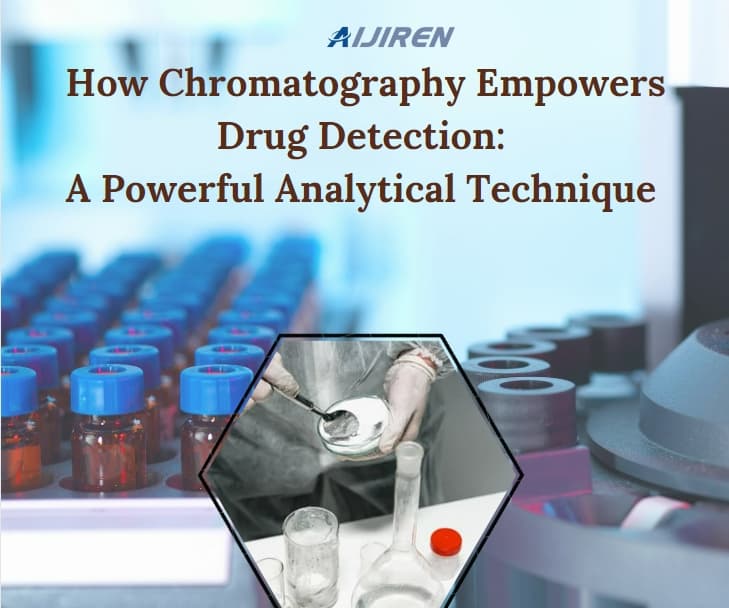The importance of vials in HPLC analysis
Definition
High-performance liquid chromatography (HPLC) is a chromatographic technique used in the fields of analytical chemistry, biochemistry, and industry to separate mixtures. The main purpose of using HPLC is to identify, quantify and purify individual components in a mixture. The technology has been widely adopted for routine use by pharmaceutical manufacturers, research laboratories, analytical laboratories, and clinical laboratories. HPLC techniques can aid in the qualitative and quantitative determination of impurities, levels, and degradation products. These are applied in quality control in various fields.
Glass HPLC vials are ubiquitous in analytical laboratories, and Aijiren offers many varieties of HPLC vials to meet the various needs of scientists. Thus, multiple vial types may be used simultaneously in a single laboratory without much thought about which type is best for analytical method development and validation. This study highlights the possibility of vial composition as a potential factor affecting solution stability.
Features of HPLC Vials
Features of HPLC Vials
HPLC vials are available in many materials, such as PP, borosilicate. Use HPLC sample vials of different materials on different test occasions. For example, plastic bottles are made of polypropylene or polymethyl pentene (PMP). Polypropylene is the most popular plastic material. Polypropylene vials are heat-resistant up to 135 degrees Celsius and are commonly used in chromatography experiments. With higher heat resistance and good chemical resistance, lightweight, durable, and economical, PMP is the material of choice for pH-sensitive samples, sodium, or heavy metal analysis. If you need to analyze anything that might adsorb into the borosilicate glass, or you want to avoid the precipitation of sodium adducts from the glass, the 9mm PP screw top vials seem to do the trick.
Autosampler vials are commonly used in various industries involving HPLC and GC techniques. They come in a variety of categories including screw top, screw top, snap ring, crimp headspace, crimp top, and more. According to the type, autosampler vials are divided into HPLC autosampler vials and GC vials and further divided into liquid autosampler vials, headspace autosampler vials, etc.
The importance of HPLC vials
Autosampler vial manufacturing procedures are highly assured in terms of quality and cleanliness, as any contamination in their manufacture and packaging can lead to analytical errors in chromatographic procedures. Crafted to not interfere with the accuracy and precision of HPLC and GC procedures, these Autosampler vials are made from pharmaceutical packaging-grade glass and are often purchased with septa and vial caps for premium performance. Since autosampler vials are made of glass or plastic, they have minimal impact on sensitive sample handling. The caps of the autosampler vials are fitted with septa which do not allow any leaks from the autosampler under any conditions. The handling of autosampler vials must follow appropriate safe-use regulations to ensure error-free chromatographic procedures.
HPLC vials are used in the pharmaceutical and biopharmaceutical industry, food and beverage industry, oil and gas, environmental testing laboratories, and more. Rising demand for technologically advanced autosampler vials coupled with growing demand for improved sample safety and integrity has witnessed strong growth in the autosampler vials market.
Back to List
-
 下午2:56How do you inject a sample in HPLC?
下午2:56How do you inject a sample in HPLC? -
 上午9:04How Chromatography Empowers Drug Detection: A Powerful Analytical Technique
上午9:04How Chromatography Empowers Drug Detection: A Powerful Analytical Technique -
 下午5:01Navigating Micro Inserts for HPLC Vials: A Comprehensive Guide
下午5:01Navigating Micro Inserts for HPLC Vials: A Comprehensive Guide -
.jpg) 下午5:14Common faults and solutions of automatic samplers(1)
下午5:14Common faults and solutions of automatic samplers(1) -
 下午5:08Ensuring Sample Integrity: Navigating EPA Storage Vials Stability Guidelines
下午5:08Ensuring Sample Integrity: Navigating EPA Storage Vials Stability Guidelines

